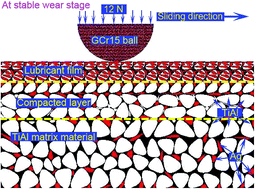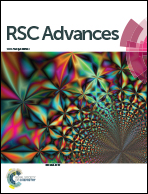Tribological behavior of a TiAl matrix composite containing 10 wt% Ag investigated at four wear stages
Abstract
The useful longevity of mechanical components, such as gears and sliding bearings, were related with their tribological behaviors. The tribological behavior of a TiAl matrix composite containing 10 wt% Ag (TiAl–10 wt% Ag) was investigated at the four different wear stages. Wear stages, which were identified by the obtained friction coefficient and wear rate, were divided into the initial wear stage (INITIAL), fast wear stage (FAST), stable wear stage (STABLE) and severe wear stage (SEVERE). The results showed that tribological behavior at INITIAL was improved for work hardening. The friction coefficient and wear rate at FAST were small for the formation of mixed layers containing a solid lubricant Ag. Excellent tribological behavior at STABLE was attributed to the existence of lubricant films containing massive amounts of solid lubricant Ag. Poor tribological behavior of TiAl–10 wt% Ag at SEVERE was obtained for the lubricant film destroyed by the propagation of fatigue cracks. It was found that TiAl–10 wt% Ag, because of the excellent tribological behavior at STABLE, could be chosen as a promising structural material for mechanical components.


 Please wait while we load your content...
Please wait while we load your content...